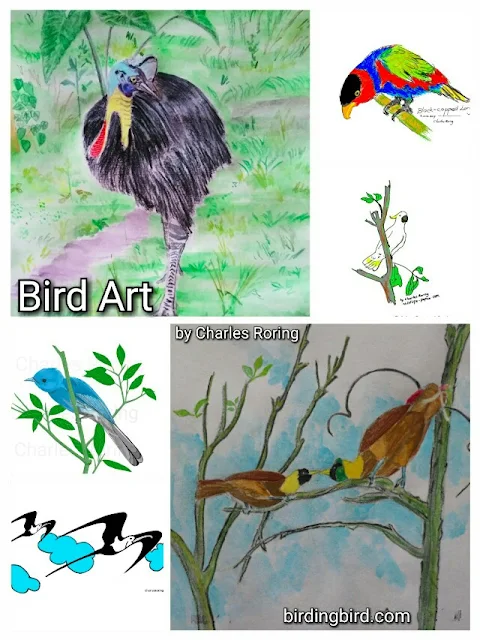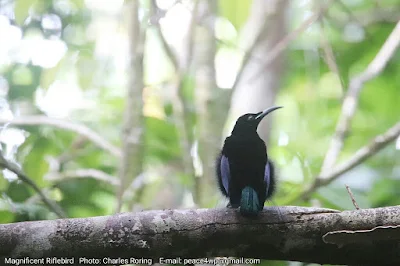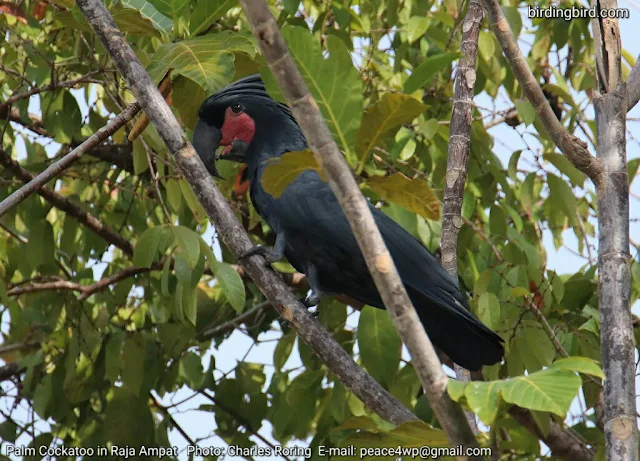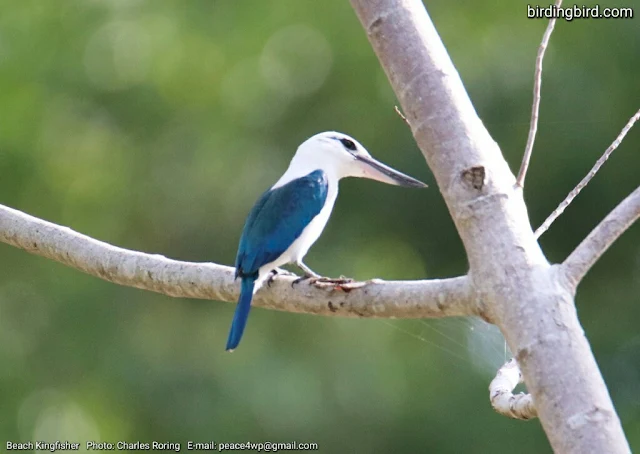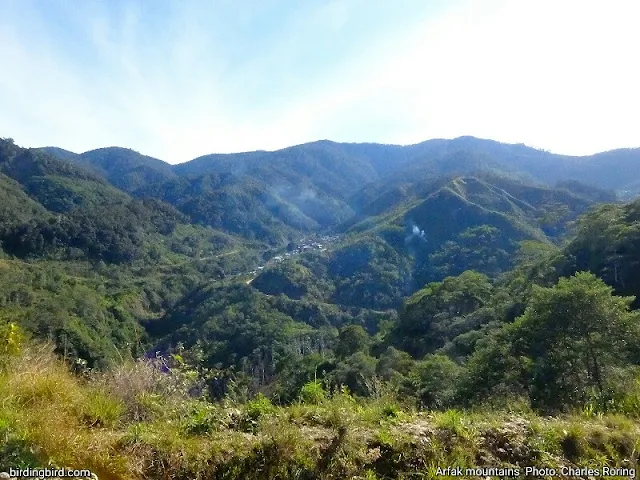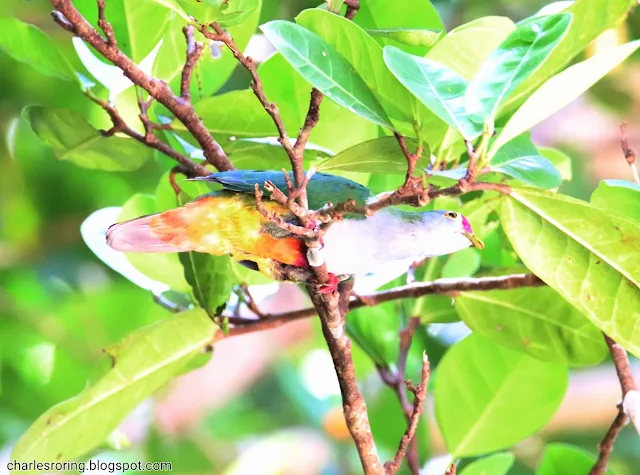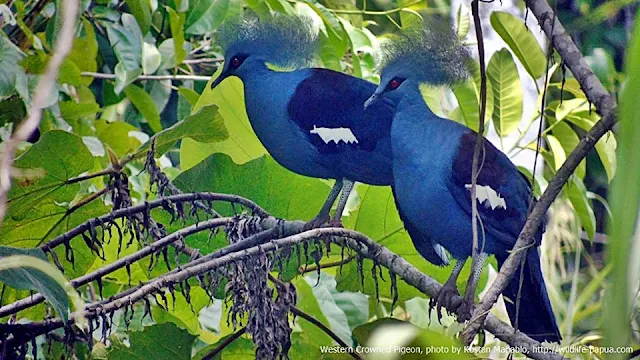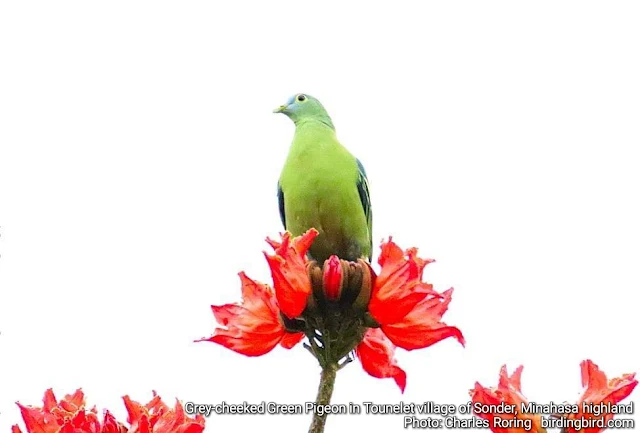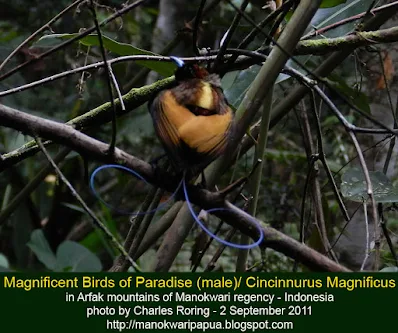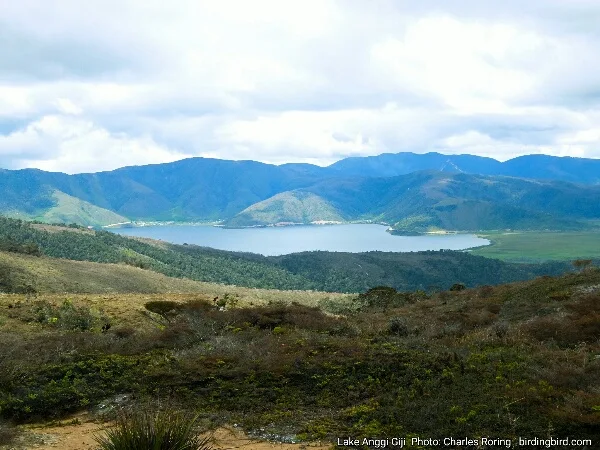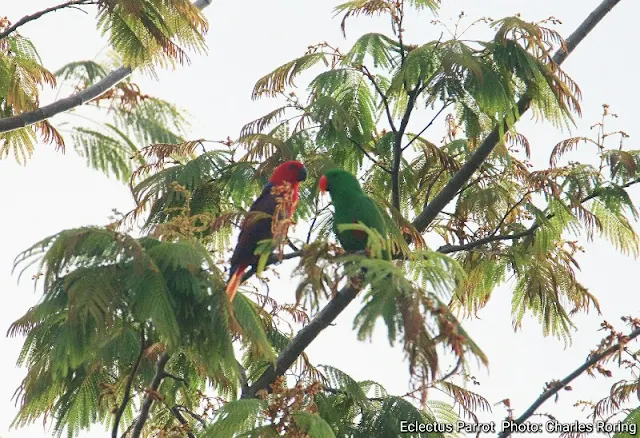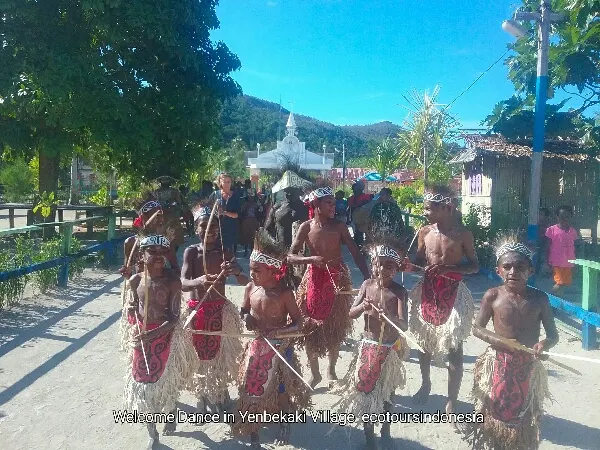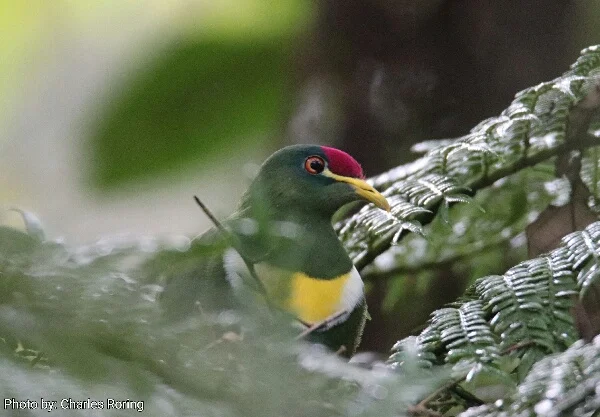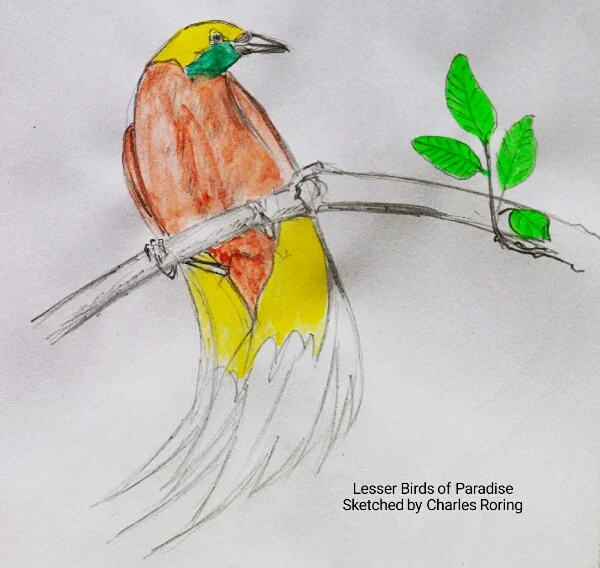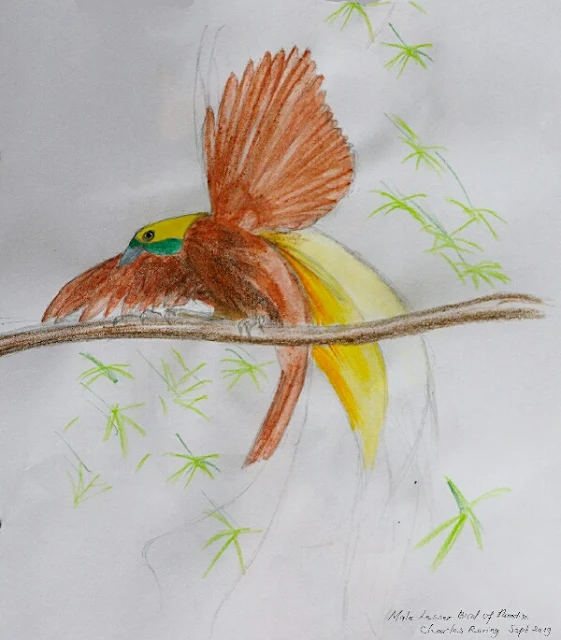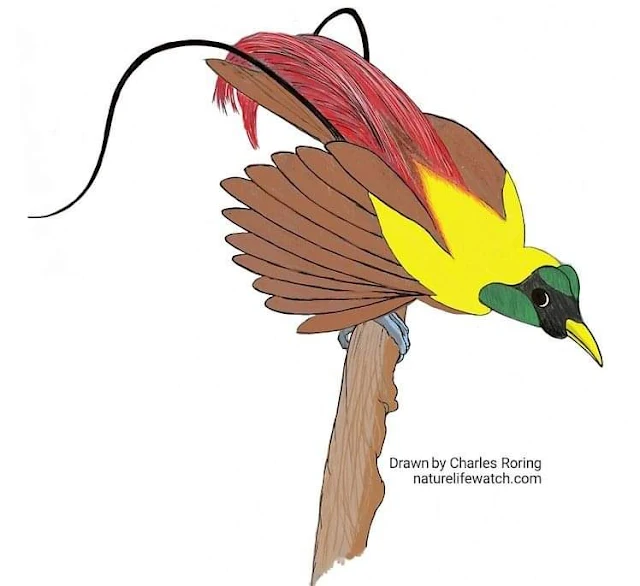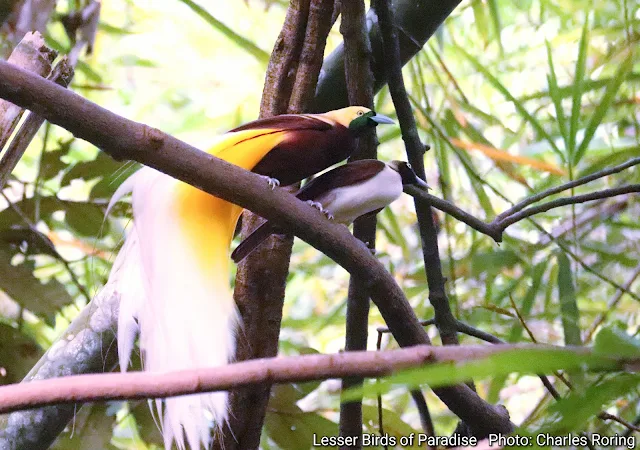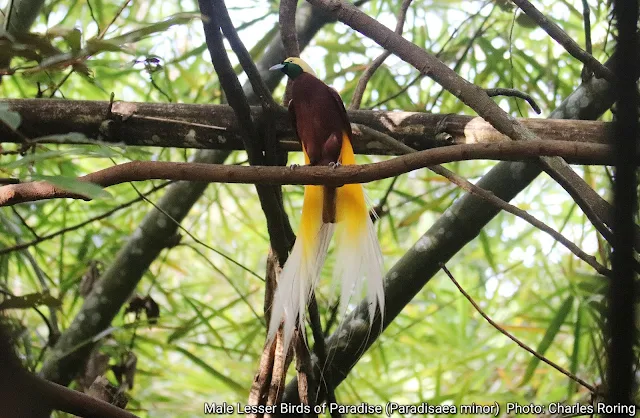Kabui is the name of a bay in Raja Ampat islands. It is one of my favorite birding sites. Every time I organize a birding tour in Waigeo, I always try to include a trip by motorized boat to the bay so that visitors could see the beauty of its karst formations and watch such birds as Beach Kingfisher, Spice Imperial Pigeon, Stephan's Emerald Dove, Great-billed Parrot, Palm Cockatoo, Brahminy Kite, Eastern Osprey, White-bellied Sea Eagle, Wimbrel, Sooty Tern, Lesser-crested Tern and a lot more.
 |
| Birding by boat in Kabui bay of Raja Ampat |
There are hundreds of karst islets in the bay. The waters inside the islets are very calm even during wave season. In my previous trips with an American tourists I saw Little-pied Cormorant, Striated Heron, Eastern Reef Egret, Rainbow Bee Eater, Sulphur-crested Cockatoo, Olive-backed Sunbird, Blyth's Hornbill.
Field guide book is needed for identifying birds that we see. Birds of New Guinea written by Thane K. Pratt, Bruce Beehleer and their friends is the one that I often use. There is also Birds of New Guinea: including Bismarck Archipelago and Bougainville by Phil Gregory. These books could be ordered online from Amazon.
Birding devices such as binoculars, spotting scopes, flash lights that will be used during the trip to this regency can be bought from Amazon.
Boat is not a stable platform for birding especially in the waters that are not calm. I ask boat driver to stop the boat or lower its speed. Most often we have to land at a beach to enjoy birding.
I usually bring a spotting scope and tripod and put it on a beach so that tour participants can watch birds that sit on the branches of tall trees in remote islands. Moustached Tree Swift, Eclectus Parrot, Singing Starling, and Violet-necked Lory are some of the birds that we can watch in Kabui bay.
In my last birding trip to the bay with American tourists, we included snorkeling activity. It was a very nice adventure.
If you want to travel to Raja Ampat and want me (Charles Roring) to organize your tour, please, contact me by email to: peace4wp@gmail.com or by whatsapp to: +6281332245180.
